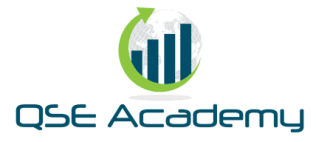SANAS: Services, Processes, and Benefits
SANAS: Services, Processes, and Benefits
If you’ve ever wondered how organizations prove they meet the highest standards in testing, calibration, and inspection, the answer often lies in SANAS accreditation. But what exactly is it, and why does it matter so much? Let’s break it down together.
The Role of SANAS
SANAS stands for the South African National Accreditation System, the only government-recognized body responsible for accrediting organizations in South Africa. Essentially, SANAS evaluates and certifies whether a laboratory, inspection body, or certification body is operating competently and meeting internationally recognized standards.
By earning SANAS accreditation, organizations demonstrate their ability to perform their work reliably and accurately. Whether it’s a testing lab ensuring the safety of drinking water or a certification body validating a quality management system, accreditation serves as a seal of trust and technical excellence.
Why is SANAS Accreditation Important?
In today’s interconnected world, trust and credibility are everything. That’s where SANAS accreditation comes in—it acts as a stamp of approval, showing that an organization’s processes and results can be trusted by clients, regulators, and global partners.
Here’s why it matters:
- Assurance of Competence: Accreditation confirms that an organization has the expertise, systems, and resources to deliver accurate and reliable results.
- Compliance with Standards: It ensures adherence to internationally recognized standards like ISO/IEC 17025 for laboratories or ISO 17020 for inspection bodies.
- Global Recognition: Thanks to SANAS’s membership in international accreditation networks like ILAC (International Laboratory Accreditation Cooperation), its certifications are recognized worldwide.
How Does SANAS Accreditation Work?
Achieving SANAS accreditation isn’t just about ticking boxes—it’s a rigorous process that evaluates every aspect of an organization’s operations. SANAS looks at everything from the qualifications of personnel to the accuracy of equipment and the robustness of internal systems.
For example:
- A testing lab applying for SANAS accreditation must demonstrate that it follows strict protocols to ensure accurate results.
- An inspection body must show that its processes are consistent and impartial, leaving no room for bias.
Building Confidence Through SANAS Accreditation
At its core, SANAS accreditation is all about building confidence. Whether it’s ensuring the quality of medical test results or validating the accuracy of an environmental assessment, SANAS helps organizations prove their competence and commitment to quality.
For businesses, it’s a badge of honor that sets them apart in competitive markets. For consumers and regulators, it’s a reassurance that the work being done meets the highest standards of safety, reliability, and professionalism.
SANAS accreditation is more than just a certification—it’s a foundation for trust, reliability, and global recognition. No matter the industry, it’s an essential step for organizations that want to demonstrate their excellence and make a lasting impact.
Services Offered by SANAS
When we talk about SANAS accreditation, we’re not just referring to one type of service. SANAS supports a wide range of industries by accrediting organizations in areas like testing, certification, and inspection. Each service is designed to ensure that businesses meet internationally recognized standards, helping them gain credibility and trust in their fields.
1. Laboratory Accreditation
Laboratories are the backbone of many industries, from healthcare to manufacturing, and ensuring their accuracy and reliability is critical. SANAS plays a vital role here by accrediting testing and calibration laboratories under standards like ISO/IEC 17025.
What this means:
- Testing labs must demonstrate their ability to produce accurate, reliable results consistently.
- Calibration labs ensure that equipment used in industries like aviation or healthcare meets precise technical requirements.
For example, a medical lab with SANAS accreditation guarantees accurate diagnostic test results, which are essential for patient care.
2. Certification Body Accreditation
Certification bodies validate whether businesses meet certain standards, such as ISO certifications. SANAS ensures that these certification bodies themselves operate competently and impartially.
What this involves:
- Accrediting bodies that certify quality management systems (e.g., ISO 9001).
- Ensuring product certifications meet safety and quality benchmarks.
- Validating personnel certifications, such as qualifications for skilled workers.
This layer of oversight ensures that certifications awarded to businesses are credible and recognized globally.
3. Inspection Body Accreditation
Inspection bodies are responsible for verifying compliance in areas like product safety, structural integrity, or environmental standards. SANAS accredits these organizations under ISO/IEC 17020, ensuring their inspections are impartial and thorough.
Industries that benefit:
- Construction: Ensuring building safety and adherence to regulations.
- Energy: Verifying the efficiency of energy systems.
- Manufacturing: Inspecting product quality and compliance with safety standards.
An inspection body with SANAS accreditation gives clients confidence that their assessments are accurate and unbiased.
4. Specialized Accreditations
SANAS also caters to unique sectors that require tailored accreditation services, such as:
- Forensic Science Laboratories: Ensuring the accuracy of evidence analysis for legal cases.
- Energy Efficiency Verification: Accrediting organizations that evaluate energy-saving measures and systems.
- Legal Metrology Services: Certifying the accuracy of measuring instruments like scales and meters used in trade.
These specialized accreditations demonstrate SANAS’s commitment to supporting diverse industries with high-stakes requirements.
Why These Services Matter
Each of these services offered under SANAS accreditation serves a common goal: ensuring competence, credibility, and consistency. Whether it’s a testing lab, a certification body, or an inspection service, SANAS provides the framework to build trust and demonstrate excellence.
When an organization earns SANAS accreditation, it’s a sign that they’re committed to delivering accurate, reliable results. It’s not just about compliance—it’s about creating confidence in their work, both locally and globally.
The SANAS Accreditation Process
If you’re considering pursuing SANAS accreditation for your organization, you might be wondering what the process looks like. While it’s a rigorous journey, it’s designed to ensure that only organizations meeting the highest standards earn this recognition. Let’s break it down step by step to make it easy to understand.
1. Initial Application and Requirements
The first step in achieving SANAS accreditation is submitting an application. This involves providing details about your organization, the scope of accreditation you’re seeking, and your existing processes.
What happens at this stage:
- You’ll need to demonstrate that your organization aligns with the standards relevant to your industry, like ISO/IEC 17025 for testing laboratories or ISO 17020 for inspection bodies.
- SANAS will review your application to ensure it meets the basic requirements for accreditation.
This step is all about getting your paperwork in order and setting the foundation for the next phases.
2. Assessment and Evaluation
Once your application is accepted, SANAS evaluators will conduct an assessment of your organization. This is a deep dive into your systems, processes, and documentation to ensure they meet the necessary standards.
Here’s what to expect:
- On-Site Visit: Assessors will visit your facilities to observe operations, review records, and evaluate staff competence.
- Document Review: They’ll carefully examine your policies, procedures, and records to confirm compliance with relevant standards.
- Interviews: Staff members may be interviewed to ensure they understand and follow the required protocols.
This stage ensures that your organization isn’t just meeting the requirements on paper but is also practicing them effectively in daily operations.
3. Addressing Non-Conformities
It’s not uncommon for organizations to encounter non-conformities during the assessment. These are areas where your operations don’t fully align with the SANAS accreditation standards.
What to do if this happens:
- Corrective Actions: You’ll need to implement changes to address the identified gaps.
- Documentation: Provide evidence of these corrective actions to SANAS, showing how the issues have been resolved.
- Re-Assessment: In some cases, SANAS may conduct a follow-up assessment to verify that the corrections are effective.
Don’t worry—this step is an opportunity to improve, and SANAS evaluators are there to guide you through the process.
4. Accreditation Approval
Once all non-conformities are resolved and your organization meets the standards, SANAS will grant accreditation. At this point, you can proudly display your SANAS accreditation as a mark of your competence and commitment to quality.
What this means for you:
- Your organization is now recognized as meeting internationally accepted standards.
- You’ll receive an accreditation certificate, which you can use to demonstrate your compliance to clients, regulators, and partners.
5. Ongoing Maintenance of Accreditation
Earning SANAS accreditation is a significant milestone, but maintaining it is an ongoing commitment. Regular audits and surveillance visits ensure that your organization continues to meet the required standards.
What’s involved in maintaining accreditation:
- Surveillance Assessments: SANAS will periodically review your operations to confirm continued compliance.
- Updates and Improvements: You’ll need to stay informed about changes to standards and update your processes accordingly.
- Renewal Applications: Accreditation is not indefinite, so you’ll need to reapply periodically to maintain your status.
Why the Process Matters
The SANAS accreditation process is designed to be thorough, ensuring that only organizations meeting the highest standards achieve this recognition. While it requires effort, each step strengthens your operations, improves quality, and builds trust with your clients and stakeholders.
By following this process, your organization doesn’t just earn a certificate—it earns credibility, professionalism, and a competitive edge in the industry. And that’s worth every step of the journey!
Benefits of SANAS Accreditation
Earning SANAS accreditation isn’t just about meeting a checklist of requirements—it’s about opening doors to a world of opportunities. From boosting credibility to improving operational efficiency, the benefits of this prestigious certification extend far and wide. Let’s dive into why so many organizations strive for SANAS accreditation and how it can transform your business.
1. Building Credibility and Trust
Imagine being able to show your clients and stakeholders that your organization meets internationally recognized standards. That’s exactly what SANAS accreditation does—it’s a seal of approval that sets you apart from competitors.
Why it matters:
- It assures clients that your processes, testing, or inspections are reliable and accurate.
- Regulators and industry bodies are more likely to trust and collaborate with accredited organizations.
- Accreditation demonstrates your commitment to maintaining the highest levels of professionalism.
In short, SANAS accreditation says, “You can trust us.”
2. Access to Global Markets
If your organization dreams of expanding internationally, SANAS accreditation is your passport to global recognition. SANAS is part of international agreements like ILAC (International Laboratory Accreditation Cooperation), which means its accreditations are accepted worldwide.
How it helps:
- Simplifies regulatory approvals in foreign markets.
- Opens doors to collaborations with international partners who require accredited services.
- Enhances your competitive edge by demonstrating compliance with global standards.
In today’s interconnected world, SANAS accreditation is a vital asset for businesses aiming to go global.
3. Improved Operational Efficiency
Achieving SANAS accreditation involves refining your processes to meet rigorous standards, which naturally leads to better efficiency.
What you gain:
- Standardized procedures that reduce errors and inconsistencies.
- Clear documentation that makes it easy to trace and resolve issues.
- Streamlined workflows that save time and resources.
These operational improvements don’t just help you meet accreditation requirements—they also make your business more productive and cost-effective.
4. Gaining a Competitive Advantage
In a crowded marketplace, standing out can be a challenge. SANAS accreditation gives you a unique selling point, helping you win contracts, attract clients, and grow your reputation.
Why this works:
- Many clients and regulatory bodies prefer or even require working with accredited organizations.
- Accreditation shows you’re serious about quality, giving you an edge over non-accredited competitors.
- It reinforces your brand’s position as a leader in your industry.
When clients see the SANAS logo, they know they’re choosing a trusted partner.
5. Enhancing Risk Management
One of the less obvious but equally important benefits of SANAS accreditation is how it strengthens your risk management processes. By adhering to strict standards, you’re better equipped to identify and address potential issues before they escalate.
How it works:
- Regular assessments and audits highlight areas for improvement.
- Standardized processes ensure consistent quality and reduce risks of non-compliance.
- Documentation provides a clear trail for troubleshooting and accountability.
This proactive approach not only protects your reputation but also minimizes costly mistakes.
6. Supporting Continuous Improvement
The journey to SANAS accreditation doesn’t stop once you receive your certificate. The process fosters a culture of continuous improvement, ensuring your organization stays at the forefront of quality and innovation.
How it benefits you:
- Regular audits keep your team focused on maintaining high standards.
- Feedback from SANAS helps you refine and enhance your operations.
- Staying aligned with evolving standards ensures your business remains competitive and compliant.
Continuous improvement isn’t just a requirement—it’s an opportunity to grow and excel.
Why These Benefits Matter
The advantages of SANAS accreditation go far beyond the certificate itself. It’s about building a foundation of trust, improving your operations, and positioning your organization for long-term success. Whether you’re looking to expand globally, attract new clients, or simply improve your processes, SANAS accreditation is a powerful tool to help you achieve your goals.
By earning this accreditation, you’re not just meeting standards—you’re exceeding expectations and setting yourself apart in a competitive world. And that’s a benefit no business can afford to overlook!
Industries That Benefit from SANAS Accreditation
One of the best things about SANAS accreditation is how versatile it is. This certification supports a wide range of industries, ensuring they meet internationally recognized standards for quality, reliability, and safety. Let’s take a closer look at some of the sectors that benefit the most from SANAS accreditation and why it matters to them.
1. Healthcare and Medical Testing
When it comes to healthcare, accuracy is everything. Medical laboratories play a crucial role in diagnosing and treating patients, and SANAS accreditation ensures that their testing processes are up to par.
How it helps:
- Guarantees that diagnostic tests, such as blood work or genetic screening, are reliable and accurate.
- Builds trust with doctors, patients, and healthcare providers.
- Ensures compliance with standards like ISO 15189, which focuses on quality and competence in medical labs.
For medical facilities, SANAS accreditation is a sign of excellence that directly impacts patient care.
2. Environmental Testing and Compliance
As the world focuses more on environmental sustainability, accurate testing and compliance are critical. Whether it’s monitoring air quality or testing water samples, SANAS accreditation ensures environmental labs deliver dependable results.
Why it matters:
- Helps organizations comply with environmental regulations and standards.
- Supports public health by ensuring safe water, clean air, and proper waste management.
- Demonstrates commitment to sustainability and responsible environmental practices.
Accredited environmental labs provide peace of mind that their findings are both accurate and trustworthy.
3. Manufacturing and Industrial Sectors
From product testing to calibration, SANAS accreditation is a game-changer for manufacturers. It ensures that the tools, processes, and products used in industries meet strict quality standards.
What it means for manufacturing:
- Equipment calibration labs ensure machinery operates precisely, reducing errors and downtime.
- Product testing labs validate the quality and safety of goods before they hit the market.
- Inspection bodies verify compliance with industry standards, helping manufacturers maintain credibility.
For manufacturers, SANAS accreditation is essential to remain competitive in global markets.
4. Construction and Infrastructure
In the construction industry, safety and reliability are non-negotiable. SANAS accreditation supports organizations that inspect buildings, materials, and infrastructure projects to ensure compliance with regulations and safety standards.
Key benefits:
- Inspection bodies accredited by SANAS verify the structural integrity of buildings.
- Materials testing ensures the quality and durability of construction materials.
- Accreditation helps organizations win contracts by demonstrating compliance with industry norms.
For construction projects, SANAS accreditation is a cornerstone of safety and reliability.
5. Energy and Utilities
In energy and utility sectors, precision and efficiency are critical. SANAS accreditation supports organizations in areas like energy efficiency verification and equipment testing, ensuring they meet regulatory and operational standards.
How it helps:
- Verifies the accuracy of energy audits and assessments.
- Ensures compliance with energy efficiency regulations and sustainability goals.
- Builds confidence in energy-saving measures and renewable energy initiatives.
Accredited organizations in this sector demonstrate a commitment to innovation and sustainability.
6. Forensic Science and Legal Metrology
Even specialized fields like forensic science and legal metrology rely on SANAS accreditation to ensure precision and accountability. Forensic labs and metrology services must adhere to strict standards to maintain trust and reliability.
Forensic science:
- Accreditation ensures the accuracy of evidence analysis for criminal investigations.
- Builds trust with law enforcement agencies and judicial systems.
Legal metrology:
- Certifies the accuracy of measuring instruments like scales and meters used in trade.
- Ensures compliance with consumer protection laws.
In these high-stakes industries, SANAS accreditation is critical for maintaining public trust.
Why These Industries Need SANAS Accreditation
Each of these industries relies on SANAS accreditation to demonstrate competence, ensure compliance, and build trust with stakeholders. Whether it’s healthcare, construction, or environmental testing, this certification acts as a guarantee that organizations are meeting the highest standards.
By earning SANAS accreditation, businesses in these sectors not only enhance their credibility but also position themselves as leaders in their fields. It’s not just a certification—it’s a mark of excellence that opens doors to new opportunities and greater success.
Challenges in Achieving SANAS Accreditation
Let’s be honest—earning SANAS accreditation isn’t a walk in the park. It’s a rigorous process that requires time, effort, and commitment. But don’t let that discourage you! Understanding the common challenges can help you prepare and tackle them head-on. Let’s explore some of the hurdles organizations face on their journey to accreditation and how to overcome them.
1. Managing Extensive Documentation
One of the most time-consuming aspects of achieving SANAS accreditation is the sheer amount of documentation required. From procedures and policies to testing records, every detail must be clearly documented and accessible.
Why it’s challenging:
- It’s easy to feel overwhelmed by the volume of records required.
- Inconsistent or incomplete documentation can delay the accreditation process.
How to overcome it:
- Create standardized templates for all required documents.
- Use digital tools to organize and manage records efficiently.
- Train your team to prioritize accurate and timely record-keeping.
Think of documentation as the backbone of SANAS accreditation—it supports every other aspect of compliance.
2. Addressing Non-Conformities
During the assessment process, SANAS evaluators may identify non-conformities—areas where your organization doesn’t fully meet the required standards. While this is a normal part of the process, it can feel like a setback.
Why it’s challenging:
- Non-conformities often require significant adjustments to processes or systems.
- Corrective actions can be time-intensive and resource-heavy.
How to overcome it:
- Treat non-conformities as opportunities for improvement, not failures.
- Develop a clear action plan to address each issue.
- Communicate with SANAS for guidance on resolving complex problems.
Remember, addressing non-conformities is a chance to strengthen your organization and improve overall performance.
3. Facility and Equipment Upgrades
For some organizations, meeting SANAS accreditation standards means investing in new equipment or upgrading facilities. While these changes are often necessary, they can also be costly and disruptive.
Why it’s challenging:
- Upgrades require upfront investment, which can strain budgets.
- Adjustments to facilities may disrupt daily operations.
How to overcome it:
- Start with a gap analysis to prioritize upgrades that have the biggest impact on compliance.
- Plan changes in phases to minimize disruptions.
- Consider applying for funding or grants to offset costs.
Every improvement you make brings you one step closer to earning SANAS accreditation and reaping its benefits.
4. Training and Engaging Staff
Your team plays a central role in achieving and maintaining SANAS accreditation, but getting everyone on board can be a challenge. Staff may resist new procedures or struggle to understand their roles in the accreditation process.
Why it’s challenging:
- Training programs take time and resources to implement.
- It can be difficult to maintain consistency across large or dispersed teams.
How to overcome it:
- Provide clear, hands-on training that explains the “why” behind accreditation requirements.
- Appoint team leaders to monitor compliance and support their colleagues.
- Celebrate milestones to keep your team motivated and engaged.
When your staff understands the value of SANAS accreditation, they’ll be more committed to making it a success.
5. Maintaining Long-Term Compliance
Achieving SANAS accreditation is a big accomplishment, but maintaining it is an ongoing responsibility. Regular audits, updates to standards, and changes within your organization can make it challenging to stay compliant.
Why it’s challenging:
- Standards evolve, requiring updates to your processes and systems.
- Maintaining consistency over time demands vigilance and effort.
How to overcome it:
- Schedule regular internal audits to identify and address potential issues early.
- Stay informed about changes to SANAS standards and industry regulations.
- Foster a culture of continuous improvement within your organization.
Long-term compliance isn’t just about keeping your accreditation—it’s about ensuring your operations stay efficient and reliable.
Why Overcoming These Challenges is Worth It
While the road to SANAS accreditation can be tough, every challenge you face is an opportunity to improve your organization. The benefits—enhanced credibility, global recognition, and operational excellence—make the effort worthwhile.
With the right mindset, tools, and team, you can navigate these challenges and achieve SANAS accreditation, setting your business apart as a leader in your industry. And that’s something to be proud of!
Steps to Prepare for SANAS Accreditation
Embarking on the journey to earn SANAS accreditation can feel like a big leap, but with the right preparation, you’ll find it manageable and rewarding. Think of it as building a strong foundation for your organization, ensuring that every process, record, and system aligns with internationally recognized standards. Let’s walk through the key steps to get you ready for success.
1. Conduct a Gap Analysis
The first step in preparing for SANAS accreditation is understanding where you currently stand. A gap analysis helps you identify areas where your organization meets the required standards and where improvements are needed.
How to do it:
- Review your current processes, systems, and documentation against the specific SANAS standards for your industry, such as ISO/IEC 17025 or ISO 15189.
- Identify gaps in areas like quality control, staff training, or equipment calibration.
- Prioritize the areas that need the most attention to meet SANAS accreditation requirements.
This initial assessment provides a clear roadmap for your accreditation journey.
2. Develop and Refine Documentation
Documentation is a cornerstone of SANAS accreditation, and getting it right is crucial. Every process, policy, and procedure should be clearly documented to demonstrate compliance.
Tips for effective documentation:
- Create clear Standard Operating Procedures (SOPs) for every critical task.
- Ensure that records are accurate, up-to-date, and easily accessible.
- Use templates to maintain consistency across all documentation.
Think of your documentation as a living, breathing guide that reflects how your organization operates.
3. Train Your Team
Your team plays a vital role in earning and maintaining SANAS accreditation, so it’s essential to ensure everyone understands their responsibilities. Training is key to building competence and confidence.
How to train effectively:
- Conduct workshops or hands-on sessions to familiarize staff with SANAS standards.
- Provide specific training on tasks like record-keeping, equipment handling, or quality control checks.
- Encourage open communication so employees can ask questions or share concerns.
When your team is well-trained, they’ll not only meet accreditation requirements but also help maintain high standards over time.
4. Standardize Processes and Procedures
Consistency is a major focus of SANAS accreditation, and standardizing your processes ensures that everything runs smoothly and predictably. This means creating detailed workflows that everyone can follow.
Steps to standardize:
- Map out each step of your operations, from start to finish.
- Use flowcharts or checklists to make processes easy to understand and replicate.
- Regularly review and update procedures to reflect changes or improvements.
Standardization doesn’t just help with accreditation—it also makes your organization more efficient.
5. Prepare for the Assessment
The assessment phase is the heart of the SANAS accreditation process, so preparing thoroughly is essential. This involves ensuring that everything is in place before the evaluators arrive.
How to get ready:
- Conduct a mock assessment to identify and address any weak spots.
- Ensure all documents, equipment, and facilities are in order.
- Assign a point of contact to guide the evaluators during their visit and answer questions.
By preparing in advance, you’ll approach the assessment with confidence.
6. Address Non-Conformities Quickly
If non-conformities are identified during the assessment, don’t panic—they’re a normal part of the process. What matters most is how you address them.
Steps to resolve issues:
- Review the evaluators’ feedback carefully and identify the root causes of the non-conformities.
- Implement corrective actions promptly and document the changes.
- Provide evidence to SANAS to show that the issues have been resolved.
Treat non-conformities as opportunities to strengthen your systems and improve overall performance.
7. Foster a Culture of Continuous Improvement
Earning SANAS accreditation is just the beginning. To maintain compliance and stay competitive, your organization should embrace continuous improvement.
How to foster improvement:
- Schedule regular internal audits to catch and fix potential issues early.
- Stay updated on changes to SANAS standards and industry regulations.
- Encourage feedback from staff and clients to identify areas for growth.
A commitment to improvement ensures that your accreditation remains a valuable asset for years to come.
Why These Steps Are Worth It
Preparing for SANAS accreditation may require effort, but each step you take strengthens your organization. From refining your processes to training your team, every improvement you make adds value—not just for accreditation but for your long-term success.
With a clear plan, the right mindset, and a commitment to excellence, you’ll be ready to earn SANAS accreditation and position your organization as a trusted leader in your industry. And once you achieve it, the benefits will make all the hard work worthwhile!
Conclusion: Why SANAS Accreditation Matters
If there’s one takeaway from everything we’ve discussed, it’s this: SANAS accreditation is more than just a certificate—it’s a powerful tool for building trust, improving processes, and opening doors to new opportunities. Whether you’re running a testing laboratory, an inspection body, or a certification organization, earning SANAS accreditation can transform your operations and reputation.
A Seal of Trust
In today’s competitive world, credibility is everything. SANAS accreditation is like a badge of honor, proving that your organization meets internationally recognized standards. It tells your clients, stakeholders, and regulators that they can rely on your results, inspections, or certifications.
Why this matters:
- Clients trust your organization’s ability to deliver accurate, reliable outcomes.
- Your business gains a competitive edge, standing out in crowded markets.
- Regulators and industry leaders recognize your commitment to excellence.
By earning SANAS accreditation, you’re saying, “We’re the real deal.”
Improving Your Operations
One of the most rewarding aspects of pursuing SANAS accreditation is how it pushes your organization to be better. The rigorous process helps you refine your systems, standardize processes, and build a stronger foundation for success.
What this looks like:
- Improved efficiency through streamlined workflows.
- Reduced risks thanks to proactive quality control and audits.
- A culture of continuous improvement that keeps your team striving for excellence.
In other words, accreditation doesn’t just benefit your clients—it also strengthens your business from the inside out.
Unlocking New Opportunities
For organizations looking to grow, SANAS accreditation is a game-changer. It opens doors to international markets, helps you win contracts, and builds credibility in global trade.
How it helps:
- Accreditation from SANAS, a member of international networks like ILAC, is recognized worldwide.
- You’ll meet regulatory requirements in regions where accreditation is mandatory.
- Your business will attract new partnerships and collaborations with organizations that value accredited services.
With SANAS accreditation, you’re not just meeting standards—you’re setting the stage for growth and innovation.
The Journey is Worth It
Sure, the road to SANAS accreditation requires effort, time, and resources. But the rewards far outweigh the challenges. From boosting your credibility to improving your operations and expanding your market reach, the benefits of accreditation make it a smart investment for any organization.
So, if you’ve been thinking about pursuing SANAS accreditation, why not take the first step today? With careful preparation and a commitment to excellence, your organization can join the ranks of accredited leaders who inspire trust and deliver outstanding results. And that’s something to celebrate!
Let’s make ISO less about stress and more about success! 🙏
make ISO standards less intimidating and more approachable for everyone.
Whether it’s ISO 9001, ISO 22000, or the cosmetics-focused ISO 22716,
I’ve spent my career turning complex jargon into clear, actionable steps
that businesses can actually use. I’m not here to call myself an expert—I prefer “enthusiast” because I truly love what I do.
There’s something incredibly rewarding about helping people navigate food safety and quality management systems
in a way that feels simple, practical, and even enjoyable.
When I’m not writing about standards, you’ll probably find me playing Piano 🎹, connecting with people, or diving into my next big project💫.
Looking for More Resources on ISO 22716?
If you found this article helpful, explore our premium resources designed to help you achieve ISO 22716 certification efficiently:
- 📦 Complete Documentation Package for ISO/IEC 22716 2017: Get all the essential templates and documents you need for fast, easy implementation.
- 🎓 Online Course on ISO/IEC 22716 2017 : Enroll in our comprehensive training to master the key concepts and practical steps toward certification.
- 📋 ISO/IEC 22716 2017 Checklist: Download our detailed checklist to ensure you’ve covered every step of the process.
These resources are tailored to meet your needs and ensure a smooth certification journey. Explore them today and get one step closer to success!





















